I grew up just a short drive from the Amalfi Coast, spending summers there with friends and family. Even now, after countless visits, it still feels magical. The turquoise sea, dramatic cliffs, and charming towns like Positano, Ravello, and Amalfi have a way of drawing you in — and once you’re here, you’ll want to slow down and soak it all in. Whether you’re wandering the quiet streets of Atrani, taking in the views from Villa Cimbrone, or catching the sunset from Praiano, every corner has its own kind of beauty. If you’re wondering how to plan your trip, where to stay, what to do, and what to eat on the Amalfi Coast, here’s everything I’ve learned over the years.
To help you navigate this dreamy stretch of coastline, here’s what we’ll cover:
- Why the Amalfi Coast is So Famous (and So Worth It)
- The Perfect 7-Day Itinerary (and How Long You Really Need)
- Where to Stay: Positano or Amalfi?
- How to Get Around
- Food That Makes the Trip
- The Best Beaches and Secret Spots
- Budget and Costs
- Final Tips
1. Why the Amalfi Coast is So Famous (and So Worth It)
It’s that mix you don’t find just anywhere: colorful seaside villages perched on cliffs, winding roads that seem to defy gravity, tiny beaches hugged by dramatic mountains, and that laid-back southern Italian energy that makes every meal feel like a celebration.
From the boat, the contrast between sea and mountains is almost surreal — especially when you’re swimming in clear blue water with steep green hills rising just behind you. But keep in mind: the mountains also mean that many beaches lose the sun by early afternoon, especially in late summer and autumn. If you’re planning a beach day, go early and soak it all in before the shadows stretch.
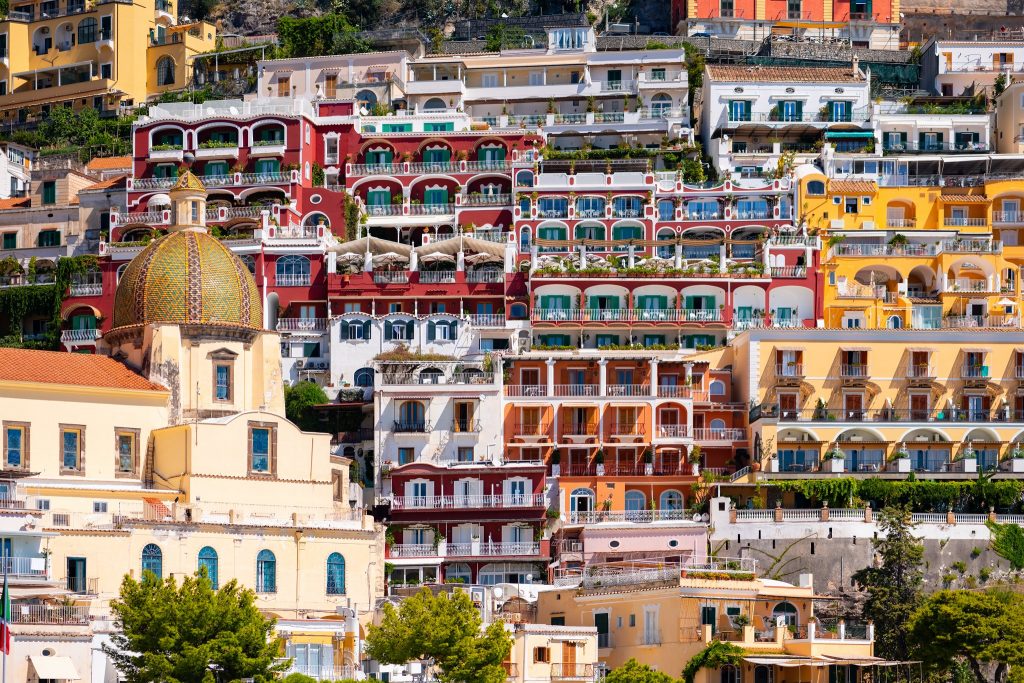

2. How Much Time Do You Really Need?
Sure, you can rush through the coast in a few days, but the real joy comes with a more relaxed pace. To truly experience the rhythm of the Amalfi Coast — the slow lunches, the hidden beaches, the quiet villages — plan for at least five to seven days. This way, you can wander without rushing and really feel the place in your bones.
A 7-Day Amalfi Coast Itinerary
Day 1: Arrive and settle in either Positano or Amalfi — your two best bases depending on your style and your vibes. Positano is vibrant, vertical, and full of energy, while Amalfi offers more history and easier access to other towns. Take it easy today: drop your bags, breathe in the sea air, and take a slow walk to get your bearings.
Day 2: Explore Positano’s layers. Start your morning early and beat the heat by wandering the narrow alleyways and viewpoints above town — like Via Cristoforo Colombo — where the best views often pop up around random corners. Head to Fornillo Beach for a quieter swim, or hike the short path out to Il Sentiero degli Dei‘s lower trailhead for incredible coastal views. In the afternoon, visit Chiesa di Santa Maria Assunta with its iconic dome, or just take the local steps higher and explore the quieter upper Positano neighborhoods.
Day 3: Discover Amalfi and hike to Ravello. Begin in Amalfi town by visiting the majestic Cathedral of Sant’Andrea, then head into the Valle delle Ferriere for a lush, shaded hike through waterfalls and ruins. The trail eventually leads up toward Ravello, perched above the sea. There, stroll the peaceful gardens of Villa Rufolo and Villa Cimbrone, and don’t miss the famous Infinity Terrace — one of the most stunning views on the coast.
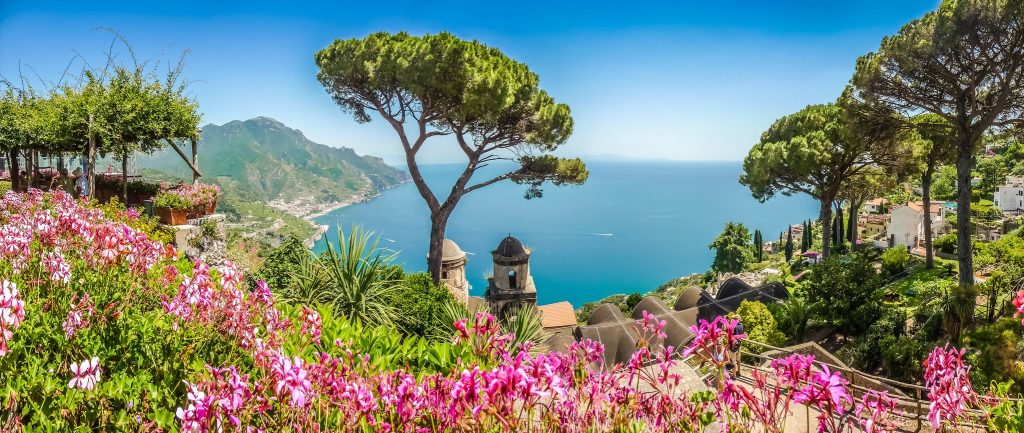
Day 4: Boat trip to Capri. Take a boat from Amalfi or Positano to Capri, the island of cliffs and legends. Cruise around to see the Faraglioni sea stacks, Grotta Bianca, and the famous Blue Grotto if the tides are right. Once on the island, walk through Anacapri to ride the chairlift to Monte Solaro, the island’s highest point, or hike the scenic Pizzolungo Path for dramatic cliffs and ancient ruins. If time allows, visit the Villa Jovis, the remains of Emperor Tiberius’s Roman palace.
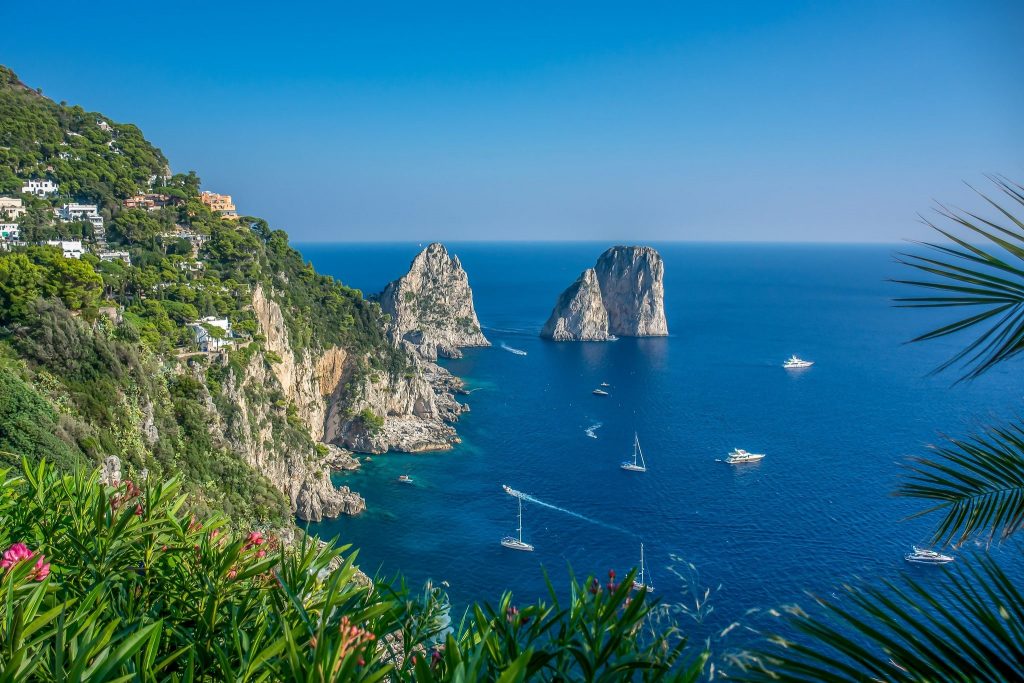

Day 5: Discover the hidden gems. Visit Atrani, a sleepy village tucked into a gorge just steps from Amalfi — it’s perfect for getting lost. Continue east to Minori and walk the Sentiero dei Limoni (Lemon Path), a terraced trail connecting Minori and Maiori through lemon groves and countryside views. In Vietri sul Mare, wander through streets decorated in ceramics, and pop into artisan workshops for a look at traditional techniques.
Day 6: Rent a boat or kayak for secret coves. Take a small boat or kayak along the coast at your own pace, stopping at caves and beaches only reachable by water. Explore spots like Lovers’ Beach, the Emerald Grotto (Grotta dello Smeraldo) near Conca dei Marini, or paddle along the cliffside under Furore Fjord, a narrow gorge with an arched bridge that looks like it belongs in a movie.
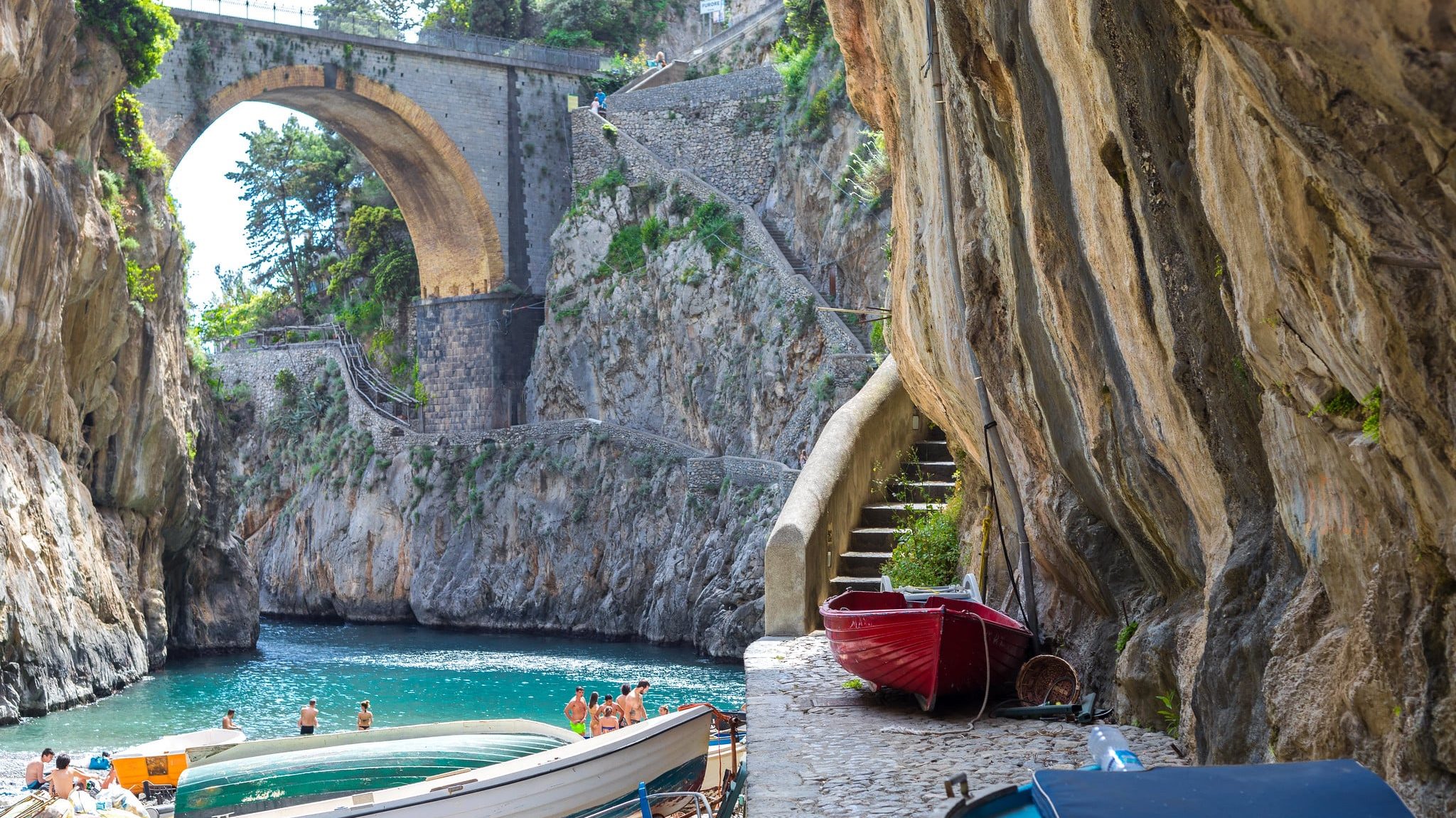
Day 7: Choose your own adventure. For a peaceful finale, visit Scala, one of the oldest towns on the coast, or hike a segment of the Path of the Gods (Il Sentiero degli Dei) for jaw-dropping views over the entire peninsula. Alternatively, revisit your favorite beach for one last swim, find a quiet piazza to journal or sketch, or simply sit and watch the boats drift along the horizon — because sometimes doing nothing is exactly the plan.
3. Where to Stay: Positano or Amalfi?
Positano is postcard-perfect — colourful houses stacked on steep cliffs, buzzing boutiques, and vibrant nightlife. It’s a little pricier and more touristy, but if you want that iconic Amalfi vibe, it’s the spot. Amalfi is a bit more laid-back and offers easier access to ferries and buses, which makes it a good hub if you plan on exploring further or hiking up to Ravello.
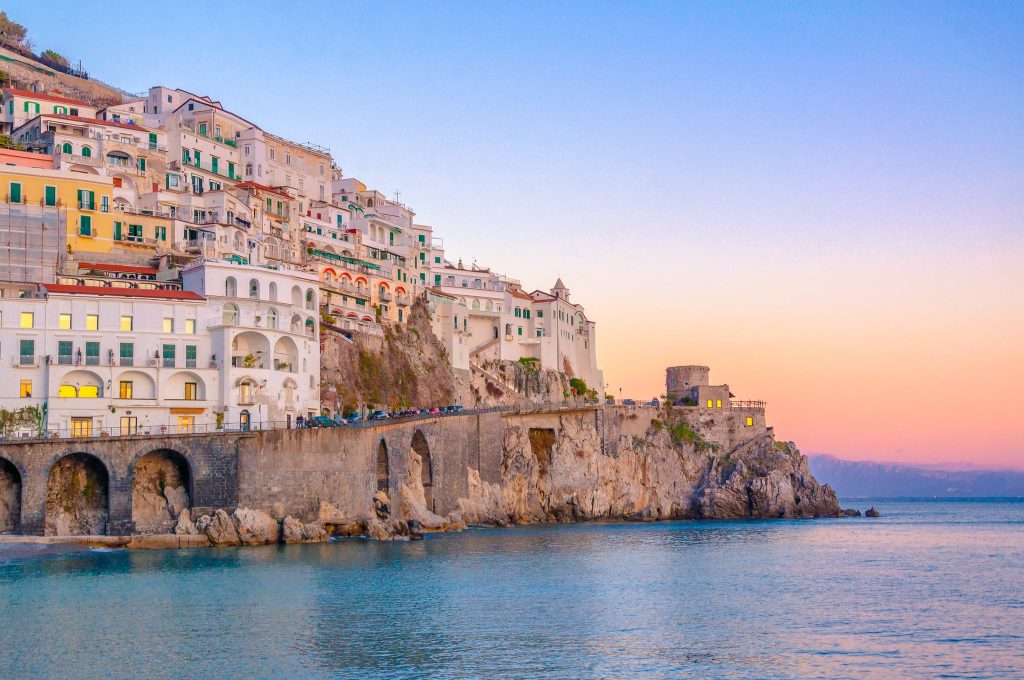
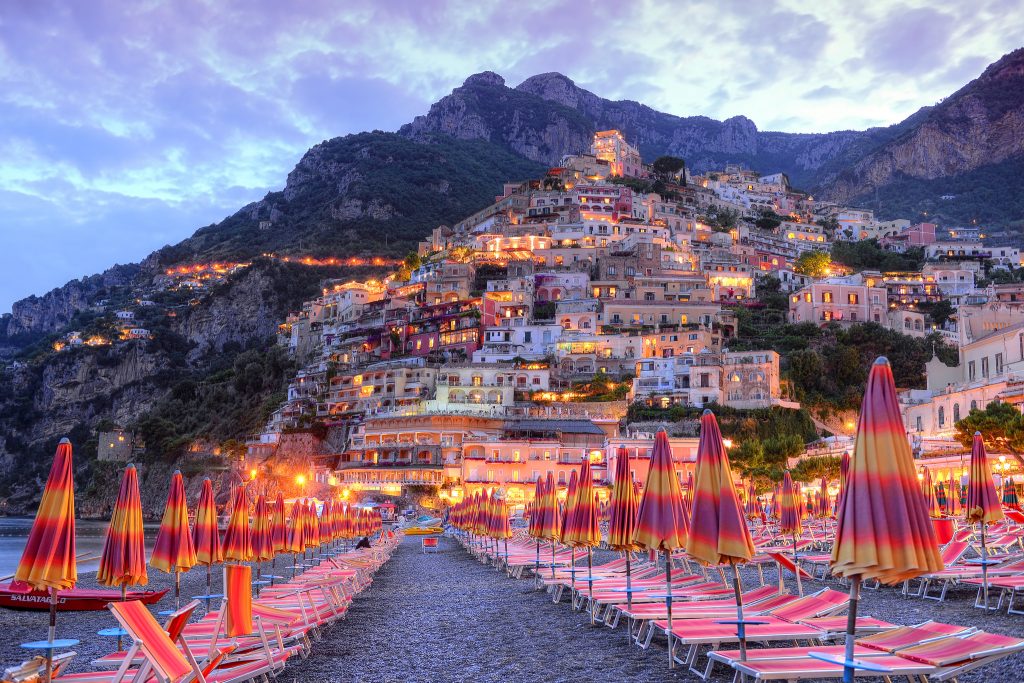
Both towns are beautiful and offer different vibes. You’ll find that flying into Naples and basing yourself near Positano works well, while Salerno is an excellent alternative for Amalfi, especially if you’re traveling by train.
If you want to see both Amalfi and Positano in one trip, without the stress of driving those winding coastal roads, consider looking into one of the many boat trips available. It’s truly one of the best ways to enjoy the views.
4. How to Get Around (Without Stressing)
So here’s the thing: driving here isn’t for the faint of heart. The roads are narrow and winding, often carved right into the cliffs — beautiful, but not exactly relaxing. In summer, they get packed with buses, scooters, and tourists trying to snap photos mid-curve. Parking? Almost mythical. If you’re not used to cliffside driving or the more… spontaneous Italian style, I’d honestly recommend skipping it.
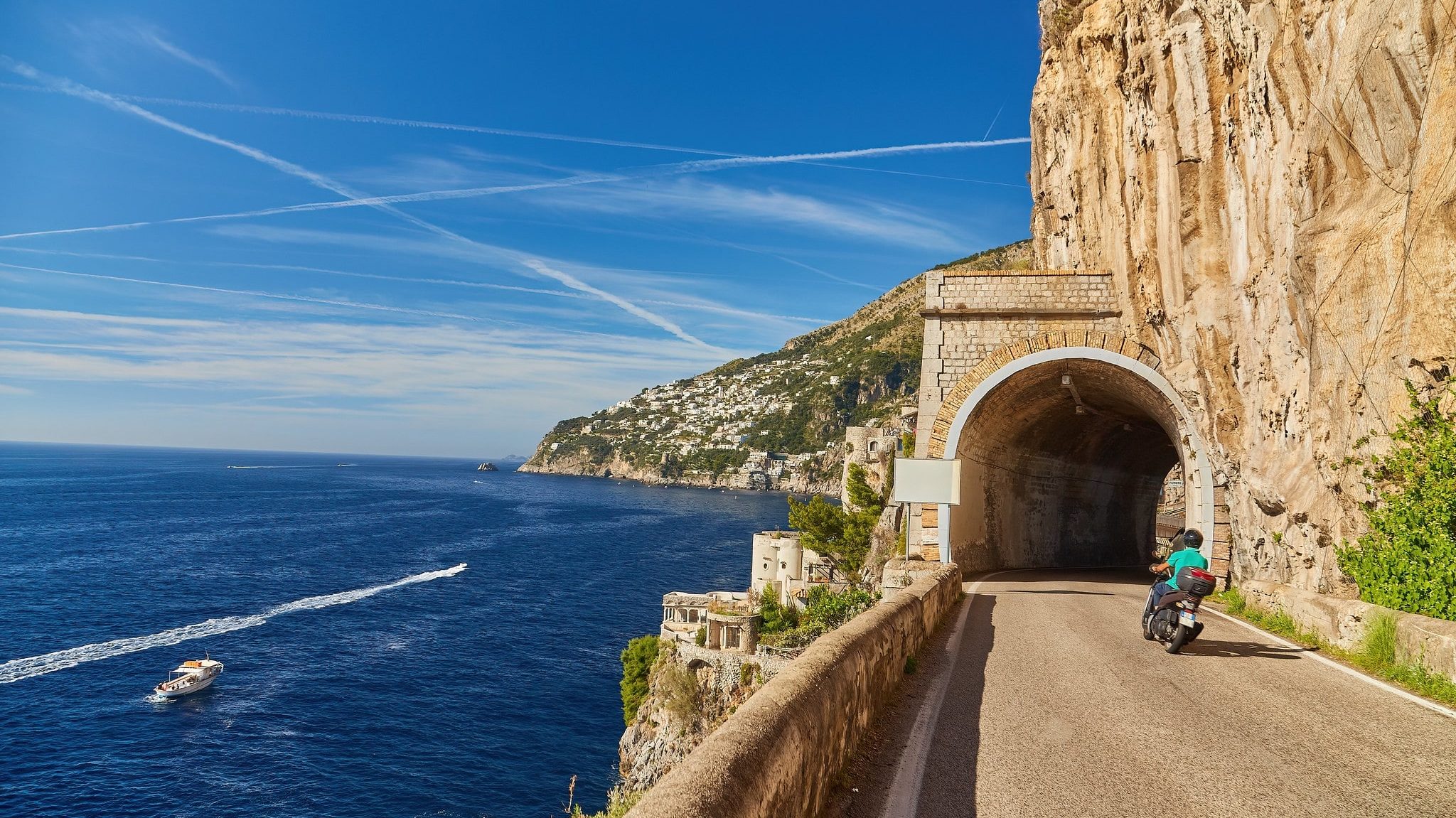
That said, if you are arriving by car, don’t worry — it’s doable with a bit of planning. Some travelers leave their car in parking garages outside the main towns and rely on ferries or buses for the rest of the trip. Towns like Amalfi, Positano, and Ravello have paid parking, usually around €25–€40 per day, depending on location and season. Staying in a smaller or quieter village — like Praiano, Agerola, or Scala — can make things easier, with better access to parking and less chaos overall.
If you’re flying in, the nearest airport is Naples International (NAP). From there, you’ve got options:
- Taxi or private transfer to the Amalfi Coast: takes 1.5 to 2 hours, with prices typically around €120–€160 one way to places like Positano or Amalfi. A shared shuttle can cost €35–€50 per person.
- Train to Salerno or Sorrento: a fast, affordable option. High-speed trains from Naples to Salerno cost around €6–€18 and take about 35 minutes. From Naples to Sorrento, the Circumvesuviana train costs around €4 and takes 70–80 minutes.
- From Salerno or Sorrento, hop on a ferry or SITA bus to reach towns along the coast.
Once you’re here, getting around is part of the adventure:
- Ferries are the easiest and most scenic way to travel between coastal towns. A one-way ticket from Positano to Amalfi or Amalfi to Salerno usually costs €8–€15, depending on distance and company. Boats to Capri are around €20–€25 each way.
- SITA buses run frequently and connect most towns. A single ride costs €1.50–€2.90, and a daily bus pass is around €8. They can get crowded in peak season, but they’re reliable and budget-friendly.
- Hiking is free — and often unforgettable. Don’t miss the Path of the Gods (Sentiero degli Dei) or the Valle delle Ferriere, both offering wild views and a peaceful break from the busy coast.
- If you’re up for something special, renting a boat (with or without a skipper) gives you the freedom to find hidden beaches and swim in crystal-clear coves.
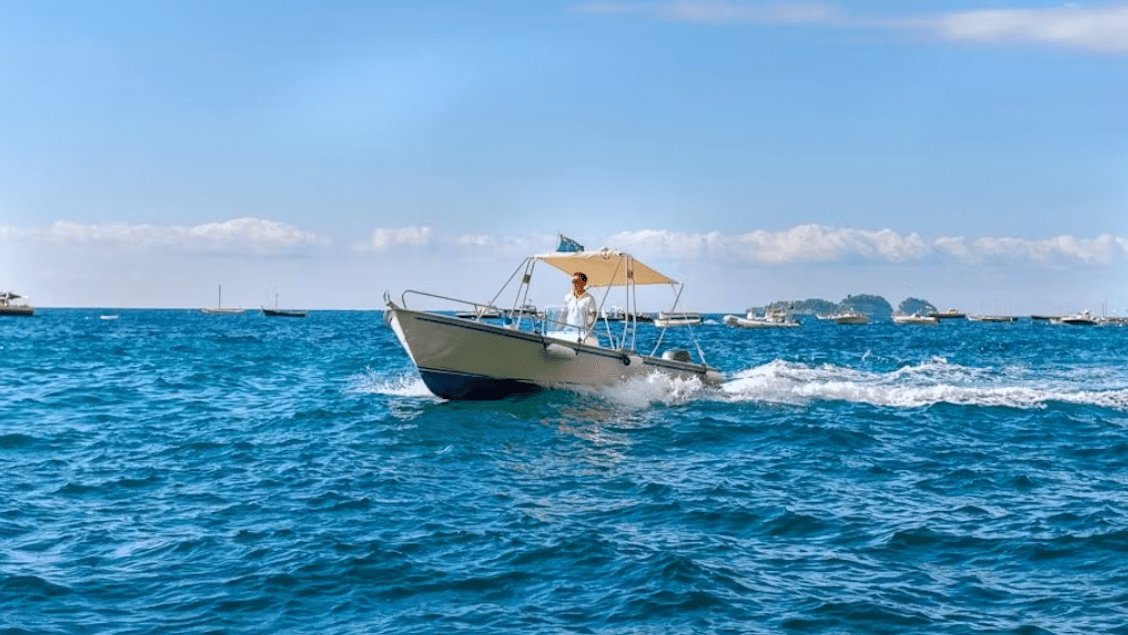
Whichever way you arrive, just know this: the Amalfi Coast isn’t about rushing. It’s about slowing down, soaking in the views, and letting each moment linger a little longer.
5. Food That Makes the Trip
The Amalfi Coast is a paradise for food lovers. Start your mornings with a crisp sfogliatella pastry and a strong espresso. For something refreshing, try a limonata made from local Amalfi lemons — it’s tangy, sweet, and perfect after a morning swim. Don’t miss out on gelato, ideally from a small local gelateria.
You don’t need a fancy restaurant to eat well here — some of the best meals are the simplest. Pop into a local trattoria for a plate of pasta, or visit a typical salumeria where you can customise your own sandwich with fresh bread, local cheeses, and cured meats. It’s the perfect packed lunch to take with you for a beach day or hike — easy, tasty, and authentically local.
For dinner, seafood is king. If you want a special experience, book a table at Ristorante La Torretta in Cetara. They’ll take you there by boat, where you can enjoy fresh fish with stunning views — it’s a unique way to dine that really sticks with you.


6. The Best Beaches and Secret Spots
The Amalfi Coast’s beaches are mostly small and pebbly, often tucked between cliffs. Some are public and free, but they can fill up quickly, especially during high season. Many are attached to private lidos where you rent sunbeds and umbrellas. One of my favorite hidden gems is Conca dei Marini, an incredible beach you can only reach by boat. Swimming there feels like discovering your own secret paradise. Other lovely spots include Arienzo Beach near Positano and Duoglio Beach just outside Amalfi. Just remember the sun dips behind the mountains early, so make sure to enjoy the water while the light lasts.
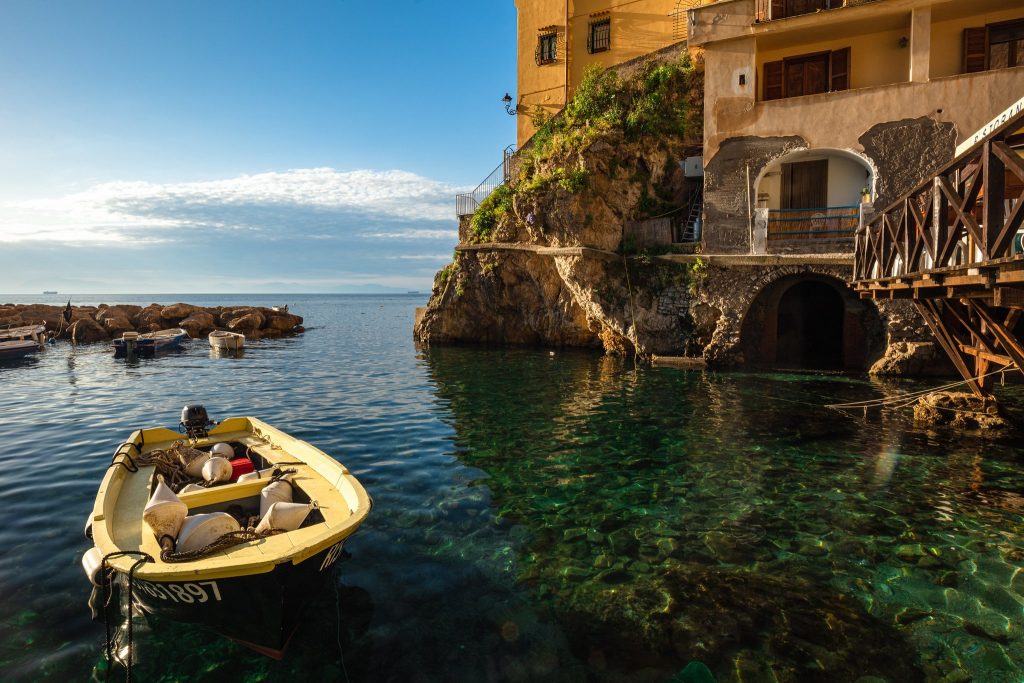
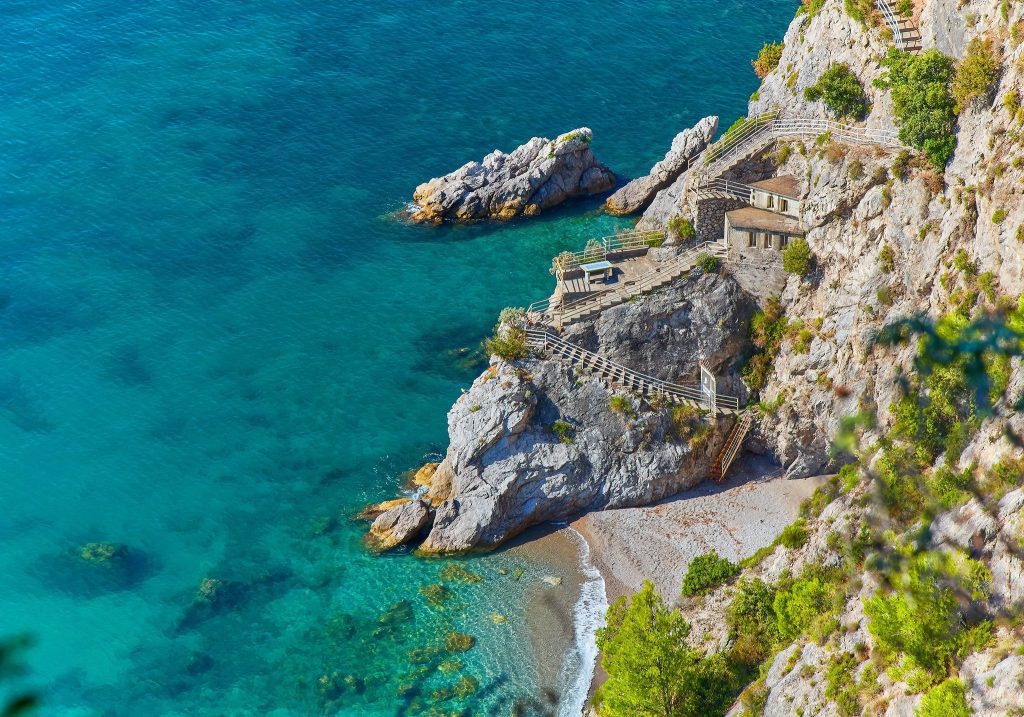
7. Budget and Costs
The Amalfi Coast is one of Italy’s most beautiful and sought-after destinations—but it can also be one of the most expensive, especially in peak season. During July and August, accommodation rates, restaurant prices, and transportation costs all rise significantly, and popular towns like Positano and Amalfi get extremely crowded.
If you’re looking to enjoy the coast without the high-season prices, consider traveling in the shoulder seasons—May, early June, or September. These months still offer warm, sunny weather but with fewer crowds and more reasonable prices across the board. Another great way to save money is by staying just outside the main tourist hubs. Towns like Cetara, Maiori, or even Salerno provide a more authentic, relaxed experience while still offering excellent access to the highlights of the coast. You’ll find more budget-friendly accommodation and dining options, plus convenient connections to boat tours, buses, and ferries.
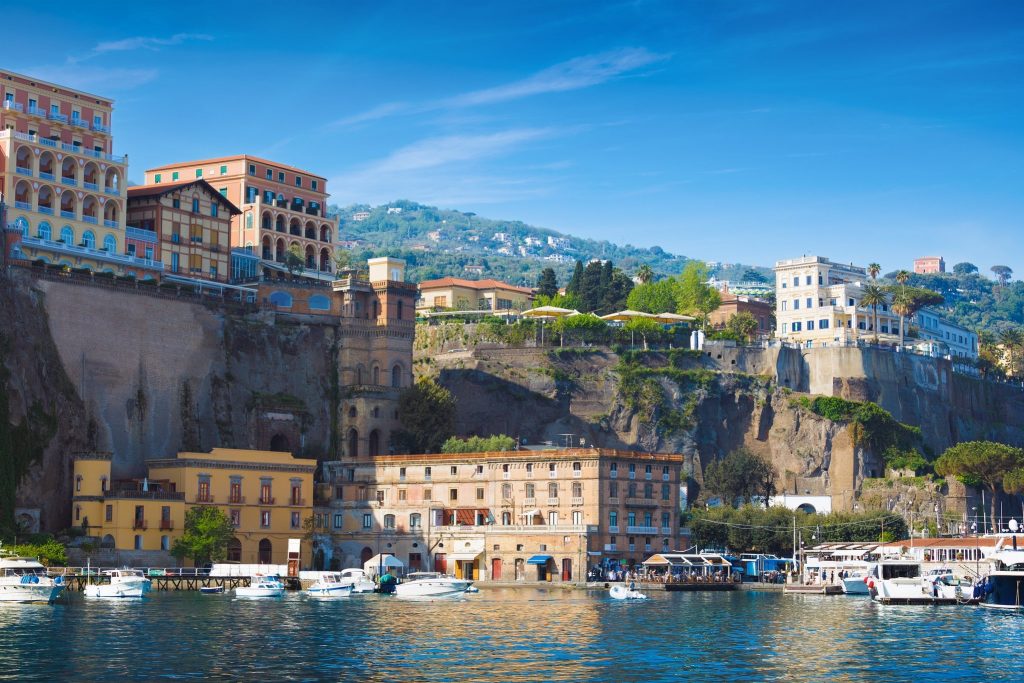
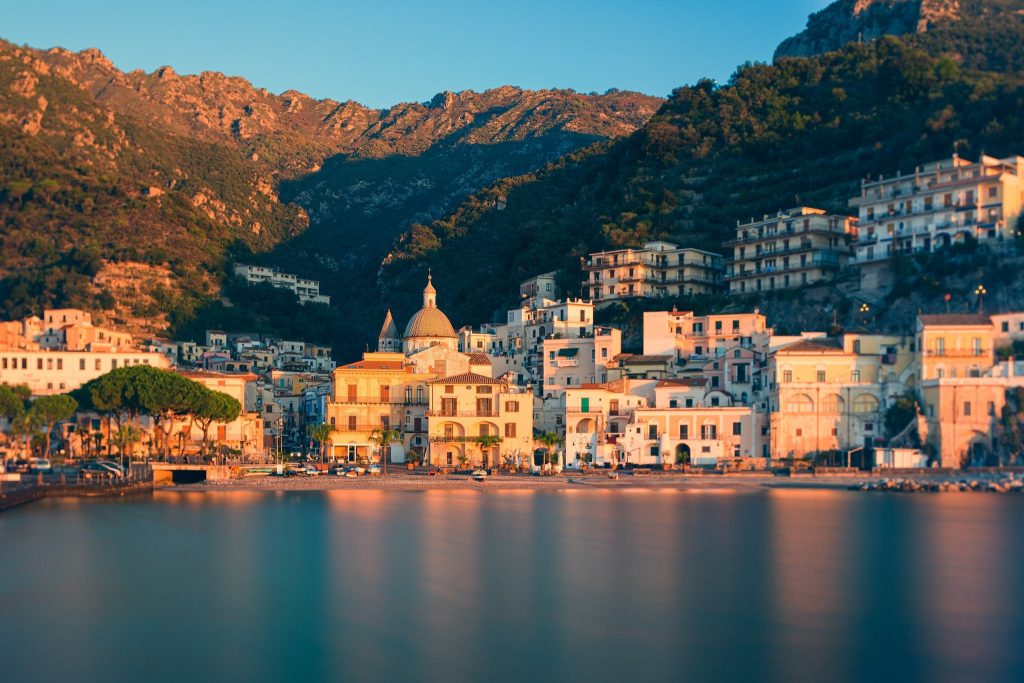
8. Final Tips
The Amalfi Coast is one of those rare places that really does live up to the hype, if you let it unfold at its own pace. Whether you’re wandering cobbled streets, savoring fresh seafood, or simply sitting by the water watching the sunset behind the mountains, it’s a trip that stays with you long after you leave.
If you want to explore it from a different angle, consider spending a day or two on the water. Whether that’s a private boat to secret beaches, a ferry to Capri, or a relaxing cruise along the coast, it’s an experience that shows the Amalfi Coast in a whole new light.
Enjoy every moment, and don’t forget to bring back a bottle of limoncello.
